Case study: digitization and cataloging of careof’s video art archive
Abstract
This case study examines the 2021 restructuring of Careof’s Video Archive, focusing on two parallel objectives: redefining the cataloging system for complex contemporary art and modernizing the technical infrastructure for digital preservation. By integrating qualitative analysis of archival standards (OAC-ICCD, FIAF, DCA) with quantitative technical workflows (ffmpeg, VMAF, MySQL), the project established a non-hierarchical relational database capable of describing multimedia artworks, documentation, and contextual relationships. Simultaneously, 1,032 hours of video material were digitized using open-source tools, normalized to broadcast-safe formats, and secured through advanced cybersecurity protocols. The results highlight an interdisciplinary approach bridging archival theory and technological innovation, offering scalable solutions for digital heritage preservation and academic accessibility.
Key Outcomes:
- Development of a flexible cataloging model aligned with international standards.
- Successful technical conversion of legacy video formats (e.g., PAL, NTSC) into sustainable digital assets.
- Implementation of a secure, open-source infrastructure resistant to cyber threats.
Introduction
Context and Objectives
Careof’s Video Archive, established in the 1990s, houses a unique collection of contemporary art and documentation, including performances, installations, and interviews. The heterogeneity of materials—spanning analog tapes, digital files, and variable media—rendered legacy cataloging systems (Bibliobit, Jukebox) inadequate due to their rigid, library-oriented structures. This project aimed to:
- Design an adaptive cataloging framework for multimedia art.
- Ensure interoperability with national (OAC-ICCD) and international (FIAF, DCA) standards.
- Digitize and preserve the archive using sustainable, open-source technologies.
Academic Relevance
The case study contributes to discourse on ephemeral art preservation, offering insights into metadata design, interoperability, and cybersecurity in cultural heritage contexts. It also provides a replicable model for institutions managing complex digital collections.
Methodology
Integrated Approach
Conceptual Framework
- Qualitative Analysis: Critically evaluated cataloging models (FRBR, OAC, FIAF) to define entities, attributes, and relationships.
- Key Tools: Hierarchical Work-Expression-Manifestation-Item (FRBR) adapted into a non-hierarchical “mother entry/sub-medium” structure (Fig. 3).
- Focus: Flexibility for complex artworks (e.g., multi-channel installations) and interoperability.
Technical Implementation
- Quantitative Workflows: Automated video analysis (ffprobe, Mediainfo) and normalization (ffmpeg, VMAF).
- Key Tools: MySQL/MariaDB for relational databases; FreeBSD jails for cybersecurity.
- Focus: Digital preservation, streaming accessibility, and resistance to cyberattacks.
Comparative Methodology Table
| Primary Focus | Archival theory and taxonomy design | Technical infrastructure and codecs |
| Data Type | Qualitative (standards analysis) | Quantitative (video metrics) |
| Output | Relational database schema | Secure, normalized digital archive |
Results
Synthesis of Outcomes
- Cataloging System: A relational database structure linking “mother entries” (abstract artworks) to sub-media (video files) and physical/digital carriers (Tab. 2).
- Digitization: 5,577 PAL files normalized to 720×576 resolution; 100% of videos scored >90 VMAF for quality retention.
- Security: Three-tier server architecture (database, UI, conversion) with unidirectional replication to prevent data breaches.
Comparative Results Table
| Interoperability | Compatible with FIAF/DCA standards | Integration with Europeana pending |
| Technical Efficiency | N/A | 95% reduction in legacy format errors |
| User Accessibility | Multi-level search interface | Streaming-ready files with EBU-R128 audio |
Discussion
Theoretical and Practical Implications
- Archival Theory: The “mother entry” model addresses the limitations of OAC’s hierarchy, accommodating variable media art (Document 1, p. 11).
- Technology: Open-source tools reduced costs but required specialized expertise for maintenance (Document 2, p. 7).
- Ethics of Access: Omitting watermarks prioritizes trust in users but risks unauthorized redistribution (Document 2, p. 26).
Limitations
- Conceptual Gaps: No empirical validation of the cataloging model’s usability for non-specialists.
- Technical Risks: Automated saturation adjustments may distort artistic intent (Document 2, p. 20).
Future Research Directions
- Develop AI-driven metadata extraction for variable media artworks.
- Explore blockchain for tracking provenance and authenticity.
- Assess WordPress UI usability for non-technical researchers.
Conclusions
Careof’s project demonstrates that preserving digital art requires balancing theoretical rigor with technical pragmatism. The relational database and open-source protocols provide a scalable model, though challenges persist in adapting to emerging formats (e.g., HDR, VR) and ensuring long-term sustainability. Institutions can replicate this framework to enhance interoperability while prioritizing cybersecurity and ethical access.
References
- ICCD. (2015). OAC – Contemporary Artworks. Italian Ministry of Culture.
- FIAF. (2016). Moving Image Cataloguing Manual. https://www.fiafnet.org
- DCA Consortium. (2013). Metadata Guidelines for Digitized Art. https://pro.europeana.eu
- Netflix. (2021). VMAF: Video Quality Assessment Tool. https://github.com/Netflix/vmaf
Project developed for careof under the patronage of




